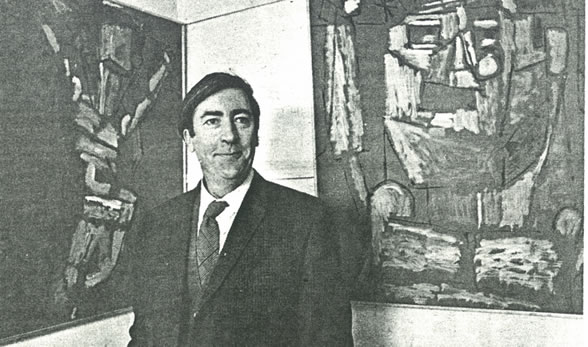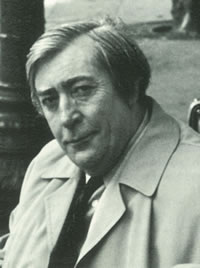Donald Young

I have painted these pictures in the conviction that the human situation is still, and always will be, the basis of all worth-while painting.
I believe that all good paintings express the spirit of the age in which they are produced without any conscious effort in that direction by the artist.
True originality consists not so much in having a new idea as in depth of feeling. Too many painters today base their work on a love of art rather than a love of life. This leads to over-sophistication. The artist gets cut off from the rest of mankind and exists in a world of pure forms which he contemplates in utter loneliness or at best in company with a few other “angelic” beings.
Some Eastern thinkers believe that the human is a higher form of life than the angelic. So do I.
Donald Young, August 1966
 It is a great pleasure to welcome a Retrospective Exhibition of the Art of Donald Young to Grey College. I first became aware of Donald Young when reading the Autobiography of his nephew Matthew Parris, the Times Columnist and Writer. He wrote that his late Uncle’s work was stored at his brother’s home and was sadly unknown. In Durham University we pride ourselves on giving unknown and neglected artists the opportunity to be seen.
It is a great pleasure to welcome a Retrospective Exhibition of the Art of Donald Young to Grey College. I first became aware of Donald Young when reading the Autobiography of his nephew Matthew Parris, the Times Columnist and Writer. He wrote that his late Uncle’s work was stored at his brother’s home and was sadly unknown. In Durham University we pride ourselves on giving unknown and neglected artists the opportunity to be seen.
When I saw Young’s work I felt that it was important that it should be exhibited in Durham. There are fine landscapes, perceptive self portraits and figurative art. Young’s finest work shows a masterly use of oil paint, composition and perspective. Some figurative work also reveals Young’s sensitivity to Abstract and Expressionist movements in Modern Art, yet he remained his own man developing a spontaneous and idiosyncratic style. His series of Crucifixions capture the torture and agony of the event from unusual perspectives, but always with the familiar symbol of the Cross as central profound comment on the human condition for Christians.
The Exhibition includes work from Young’s Chelsea School of Art days and traces his development into an increasingly Expressionist and Abstract medium.
I am delighted that Young’s work may be seen, discussed and appreciated by a wider audience, particular the young and I sincerely hope that this Exhibition will add to his reputation as an artist who deserves to be much better known.
Henry Dyson
Keeper of Fine Art in Durham University and Fellow of Grey College
